Enjoy the third story from Bernadette Gagnier, WSU V&E PhD Research Student.
I figured June would be busy—it usually is on the research side of viticulture—but I really just blinked and it was over. June brought bloom to vineyards in Washington State. With late frosts and a very wet season, I was anxious to get to bloom, to find out if there is going to be fruit for harvest this year. The fragrance of bloom is one of my favorite things in the world. It not only smells amazing, but it gets me excited to see how wine grapes are going to fare the rest of the season. I find myself holding my breath a little around bloom waiting to exhale until we get through this short but crucial window. In our research vineyard in Prosser, bloom came and went, without any alarming events. It happens so quickly. It amazes me that such a small window can be so important.
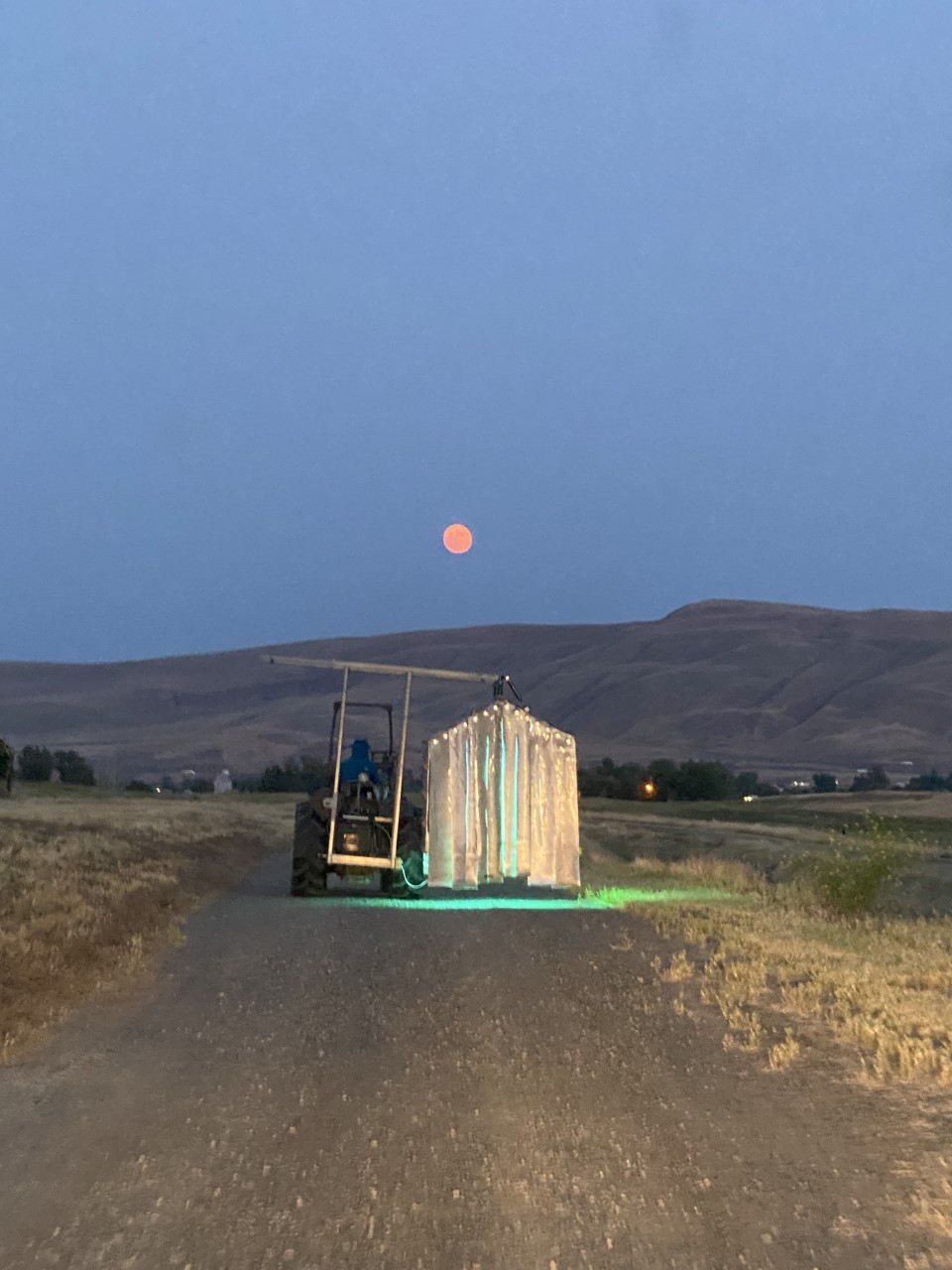
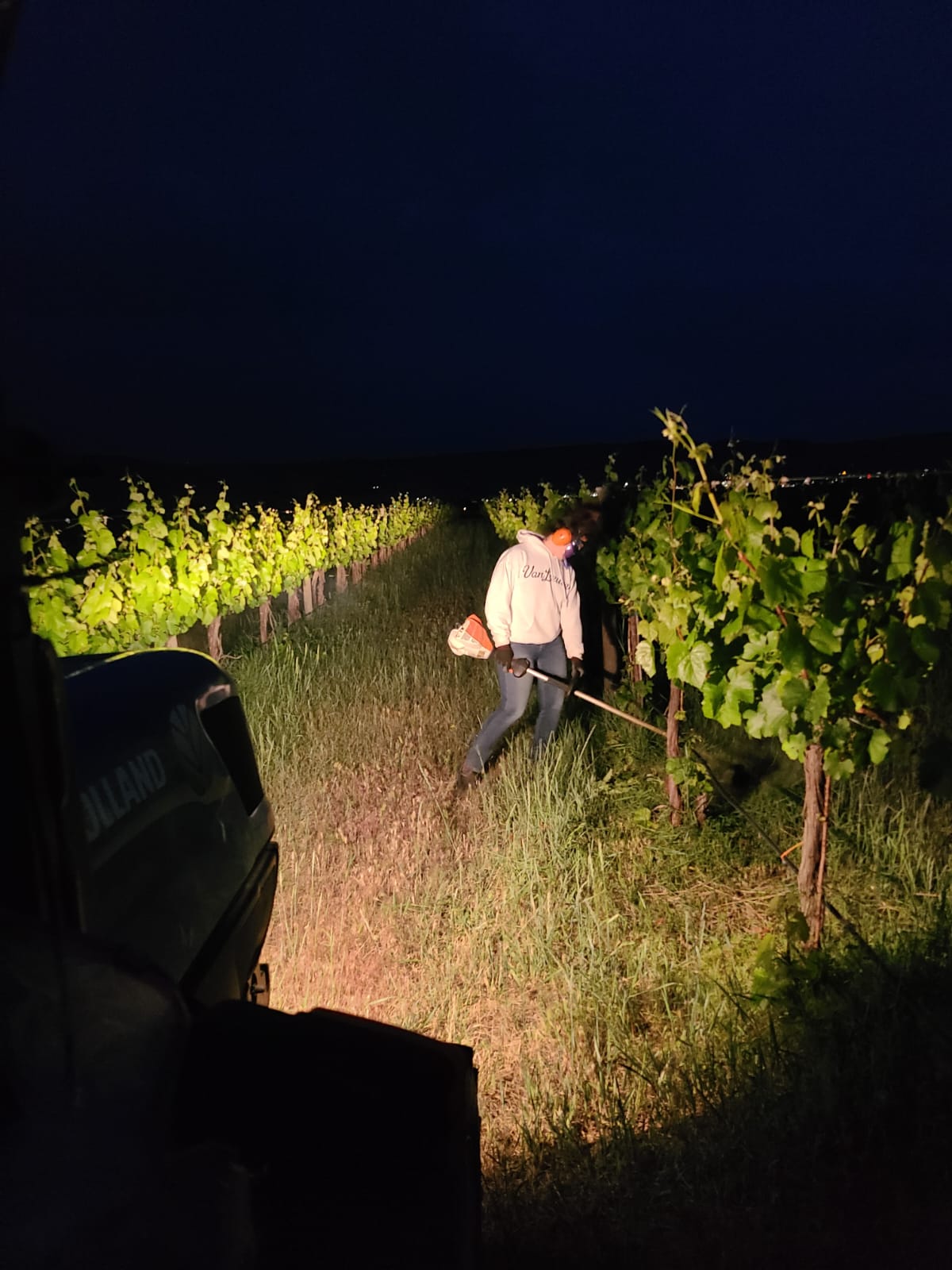
One of the research trials I am helping with evaluates different rootstocks. One of the measurements we take is sending tissue samples to a lab for nutrient analysis. We send leaf samples (whole leaves, including the petiole, the stem that connects the leaves to the plant) to a commercial laboratory. We do this at bloom to look at the nutrients that are being assimilated by the vines and make it to the leaves (and in theory the newly forming grapes). We can use this information to see if some rootstocks are better than others at taking up and circulating nutrients throughout the vine. Different rootstocks may be inclined to assimilate different nutrients better than others, and information like this could be a really useful tool for growers—especially as rootstocks are becoming more common in Washington vineyards.
June brought one of the most educational conferences I have attended. The American Society for Enology and Viticulture had their annual conference in San Diego, California, their first in-person conference since 2019. This was my first national conference as a graduate student, and I was fortunate enough to present my research to those in attendance. This was such an educational conference, learning about cutting-edge research and technology being applied to both vineyards and winemaking practices. The work being done on smoke impact by WSU, OSU, and UC Davis has made some ground-breaking progress, and to be one of the first people to hear it was such a memorable experience. This information will be discussed at the July 2022 WAVE Seminar!
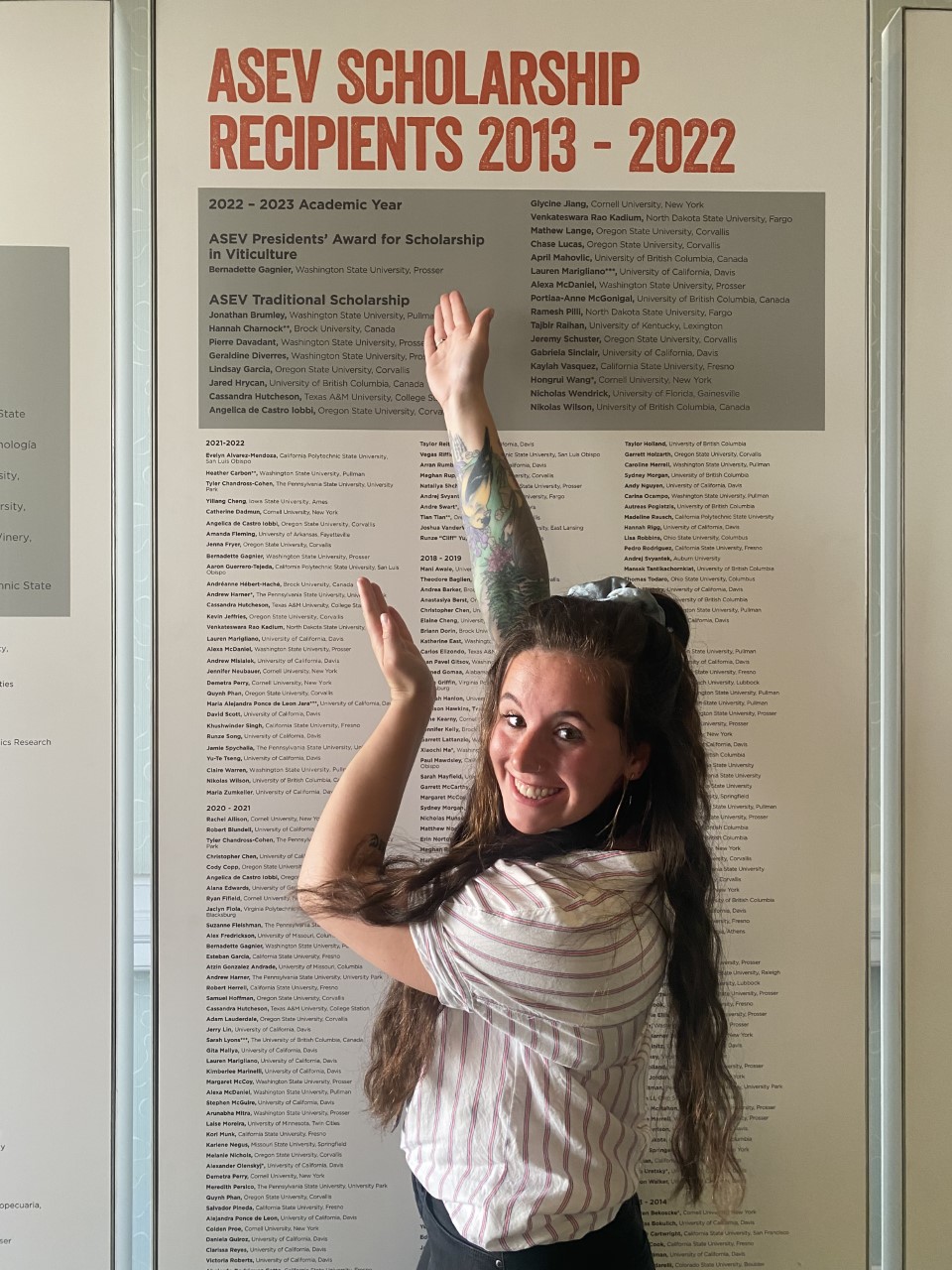
Also in June, I finally, finally got to try, from the bottle, the wine I made for WSU in 2019. I love working in vineyards and have never had a huge pull or desire to make wine, but the opportunity came in 2019 to make a wine in collaboration with Kiona Vineyards and Winery, for WSU with two of my best friends and classmates during my undergraduate studies. I visited my cousins in Southern California after the conference in San Diego and it was great to share this bottle with my family and finally enjoy the wine that was both an educational experience and a fun project with friends.
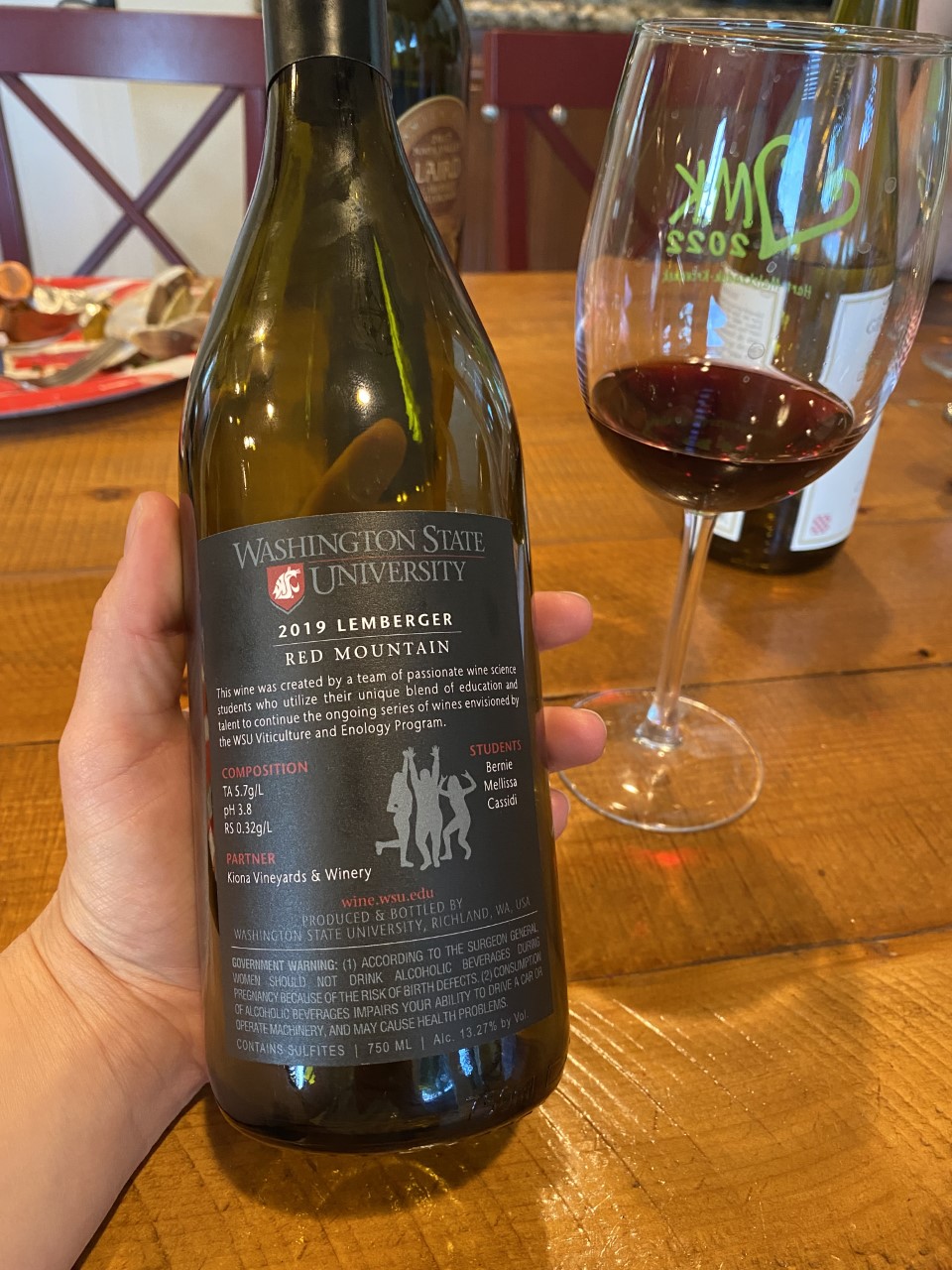
Traducido por Rosanna Lugo.
Supuse que June estaría ocupada, generalmente está en el lado de la investigación de la viticultura, pero realmente parpadeé y se acabó. Junio trajo la floración a los viñedos en el estado de Washington. Con heladas tardías y una temporada muy húmeda, estaba ansiosa por llegar a florecer, por saber si va a haber frutos para cosechar este año. La fragancia de las flores es una de mis cosas favoritas en el mundo. No solo huele increíble, sino que me emociona ver cómo les irá a las uvas de vino el resto de la temporada. Me encuentro conteniendo la respiración un poco alrededor de la floración esperando exhalar hasta que atravesemos esta ventana corta pero crucial. En nuestro viñedo de investigación en Prosser, la floración iba y venía, sin ningún evento alarmante. Sucede tan rápido. Me sorprende que una ventana tan pequeña pueda ser tan importante.


Uno de los ensayos de investigación en los que estoy ayudando evalúa diferentes portainjertos. Una de las medidas que tomamos es enviar muestras a un laboratorio para el análisis de nutrientes. Enviamos muestras de hojas (hojas enteras, incluido el pecíolo, el tronco que conecta las hojas a la planta) a un laboratorio comercial. Hacemos esto en la floración para observar los nutrientes que están siendo asimilados por las vides y llegar a las hojas (y en teoría a las uvas recién formadas). Podemos usar esta información para ver si algunos portainjertos son mejores que otros para absorber y hacer circular los nutrientes por toda la vid. Diferentes portainjertos pueden tender a asimilar diferentes nutrientes mejor que otros, e información como esta podría ser una herramienta realmente útil para los productores, especialmente porque los portainjertos son cada vez más comunes en los viñedos de Washington.
Junio trajo una de las conferencias más educativas a las que he asistido. La Sociedad Estadounidense de Enología y Viticultura celebró su conferencia anual en San Diego, California, su primera conferencia en persona desde 2019. Esta fue mi primera conferencia nacional como estudiante de posgrado y tuve la suerte de presentar mi investigación a los asistentes. Esta fue una conferencia muy educativa, aprendiendo sobre la investigación y la tecnología tan innovador que se aplican tanto a los viñedos como a las prácticas de vinificación. El trabajo realizado sobre el impacto del humo por WSU, OSU y UC Davis ha logrado un progreso innovador, y ser una de las primeras personas en escucharlo fue una experiencia tan memorable. ¡Esta información se discutirá en el Seminario WAVE de julio de 2022!

También en junio, finalmente pude probar, de la botella, el vino que hice para WSU en 2019. Me encanta trabajar en viñedos y nunca he tenido un gran impulso o deseo de hacer vino, pero la oportunidad llegó en 2019 para hacer un vino en colaboración con Kiona Vineyards and Winery, para WSU con dos de mis mejores amigos y compañeros de clase durante mis estudios universitarios. Visité a mis primos en el sur de California después de la conferencia en San Diego y fue genial compartir esta botella con mi familia y finalmente disfrutar el vino que fue una experiencia educativa y un proyecto divertido con amigos.


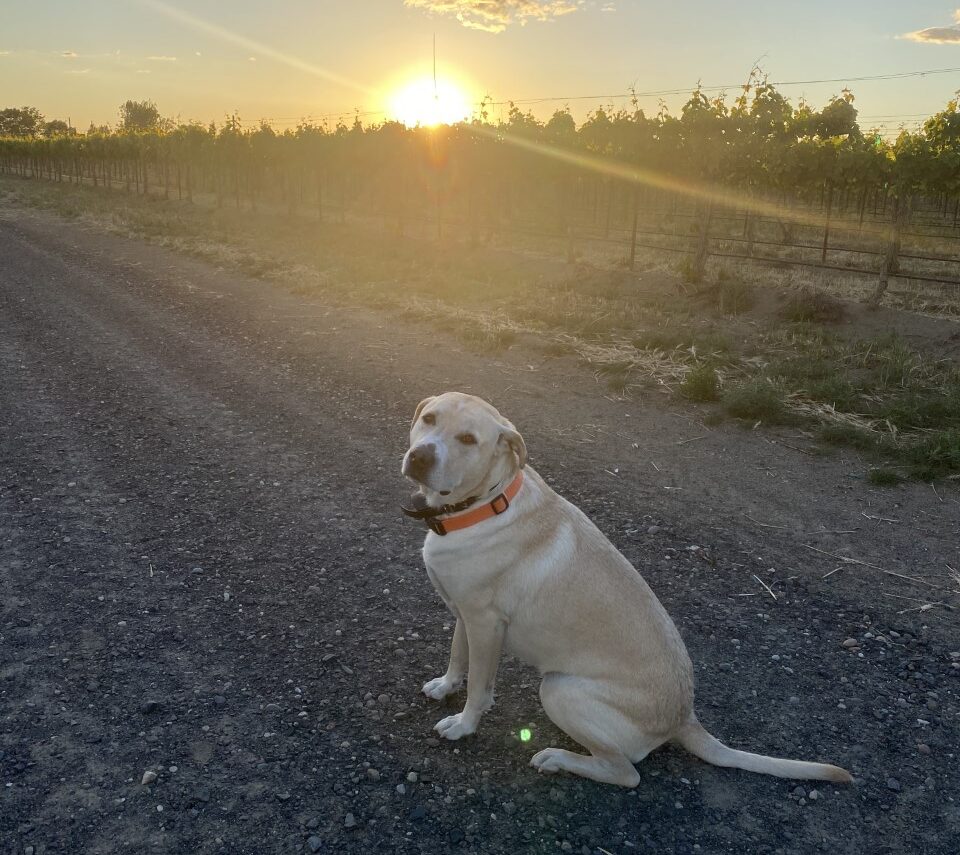
Join the Conversation